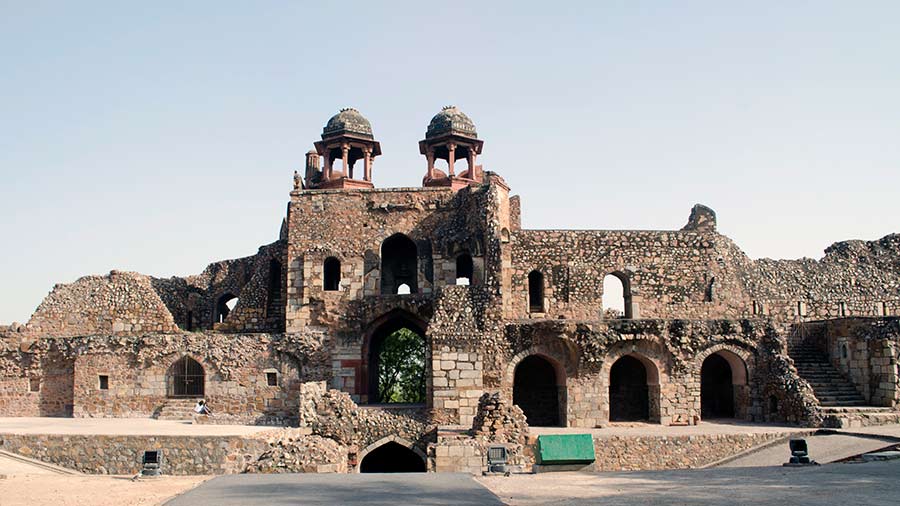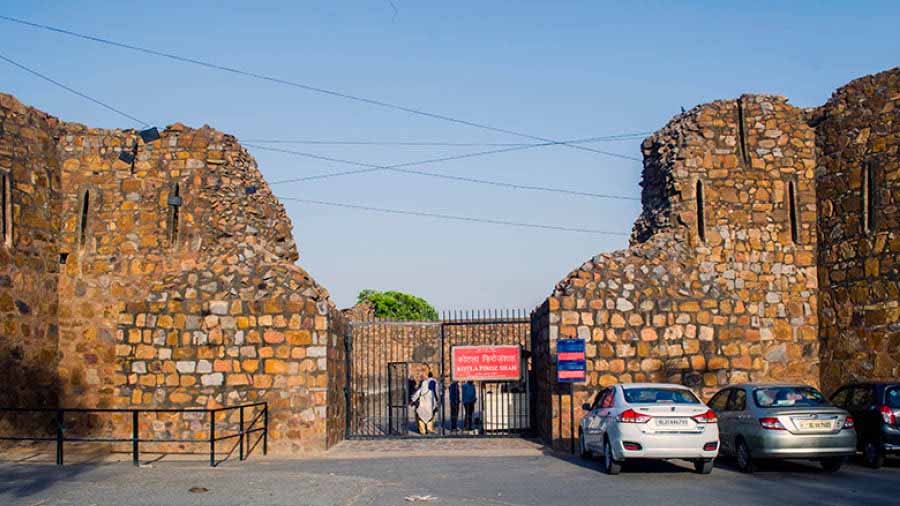In 1656, Aurangzeb, the then Mughal governor of Deccan, laid a massive siege at the mighty Golconda Fort of Hyderabad. He chose an elevated area in the northeastern corner of the fort and started bombarding the massive walls of the fort. The attack continued for four months but the mighty walls with towering bastions stood firm, driving the Mughals away.
The Mughals were driven away but the extensive shelling caused serious damage to the walls of the fort. Instead of repairing the walls of the fort, the then Qutb Shahi sultan Abdullah Qutb Shah (reign: 1626–1672) wanted to expand the fort. He wanted to bring the elevated area within the fort complex and thus prevent similar attacks on the fort. The extension came to be known as Naya Qila or 'new fort' and even after 350 years the name still stands.
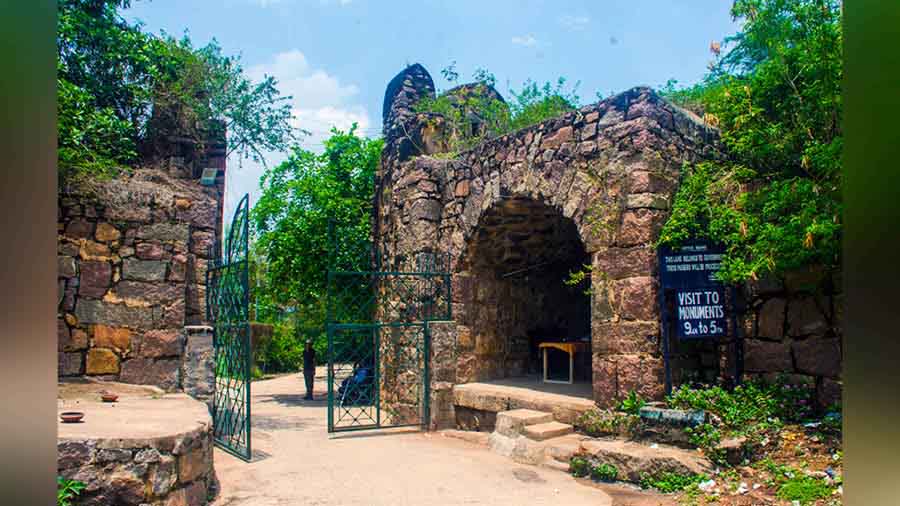
The gate of Naya Qila
Although thousands of visitors visit the famous Golconda Fort every day, the Naya Qila hardly has any visitors. No wonder, the newer extension has always been in the shadows of its old counterpart. But the Naya Qila also has its share of attractions consisting of a Baobab tree over 400 years old, along with several historical structures. Moreover, the exploration of Naya Qila offers the unique experience of walking through an active golf course.
The Naya Qila houses an 18-hole golf course run by the Hyderabad Golf Club for over two decades and has always been a centre of controversy. There have been several protests by NGOs accusing the club of intruding into heritage space, affecting the biodiversity of the region and last of all denying public access to heritage sites. Although the golf course remained, public access was provided to the ancient tree and the historic sites of the fort.
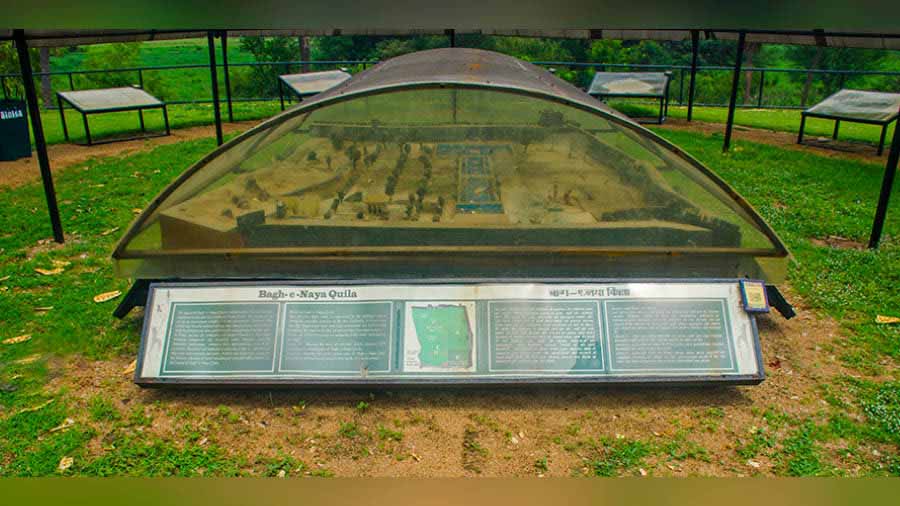
A model at Naya Qila Habitat Centre
Today, access to the fort is through one of the surviving gateways on the southern side. The security at the entrance will brief you with do’s and don’ts. The do’s instruct you to stick to the road and the paved pathways while the don’ts prevent you from walking on the greens of the golf course. The road meanders through the fort with the golf course on the left. There are occasional views of the boundary wall — complete with bastions and battlement, towering over the golf course. Even the massive Golconda Fort can be seen towering above the golfing green, with patches of sand bunkers.
The meandering road leads to a small open-air habitat centre located on the right of the road. There are several boards narrating the history of the Naya Qila, along with its restoration process. However many of the write-ups have peeled off thus leaving the visitor in the dark. Next to the habitat centre is a Persian-style garden. Sadly, it is all in ruins and the lone pavilion overgrown with vegetation and lying in utter neglect.
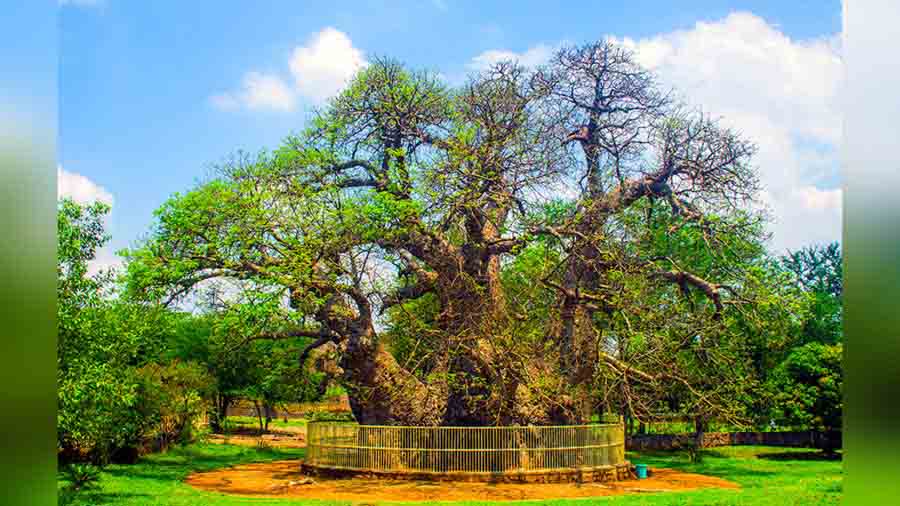
The 400-odd-year-old Baobab tree in Naya Qila
The road meanders further reaching the ancient Baobab Tree, considered as the oldest tree of Hyderabad. It is said to be a native of Madagascar and was planted by wandering friars during their stay in Golconda. Popularly known as Hatiyan ka Jhad (meaning elephant tree), its trunk has a circumference measuring a staggering 25 meters, which includes a huge cavity. No wonder the tree has its share of legends and according to one legend, the cavity inside the tree provided shelter to 40 thieves! These thieves used the cavity as a day-time shelter and would come out to loot in the night. That is sure to remind people of the popular folktale.

Mulla Khayali Mosque
Next to the giant tree stands a small but elegant mosque. Known as Mulla Khayali Mosque, it was built in 1569. It is built in memory of Mulla Khayali, a noted poet and calligraphist during Ibrahim Qutub Shah Wali’s reign. A short detour from the tree and mosque leads to several bastions topped with cannons, some of which are accessible by flight of stairs.

The Golkonda Fort towers above the golfing green, complete with sand bunker, of Naya Qila
Another pathway leads through the golfing greens past enormous bastions and battlements to the second mosque of the Naya Qila. It’s the Mosque of Mustafa Khan, built in memory of the royal architect of the Qutb Shahi dynasty. It comes in with an open courtyard with three graves.
So, next time if you are in Hyderabad and visit the Golconda Fort, do extract a couple of hours more time to witness a unique mix of natural and built heritage.
Travel details:
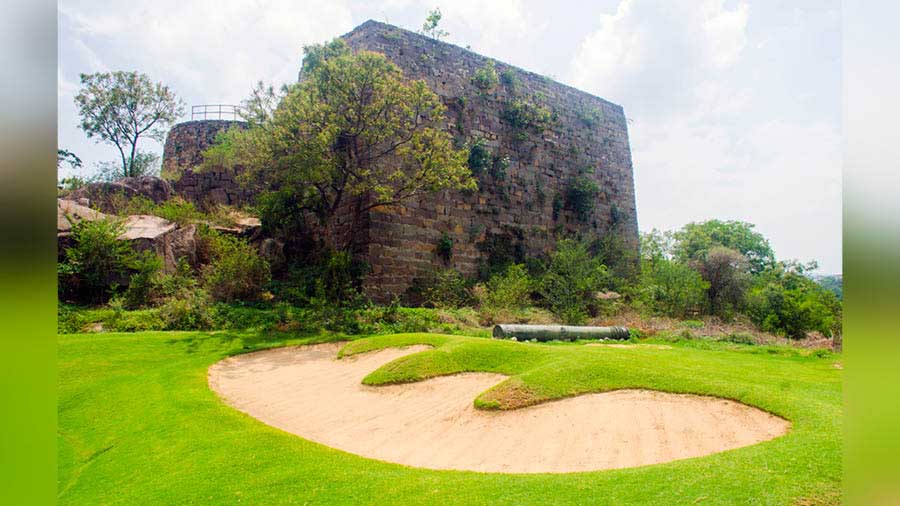
A bastion with a canon at the base towers above the sand bunker of the golf course
- Timing: 9 am – 5 pm
- Entry fee: Free
- Photography: Allowed

